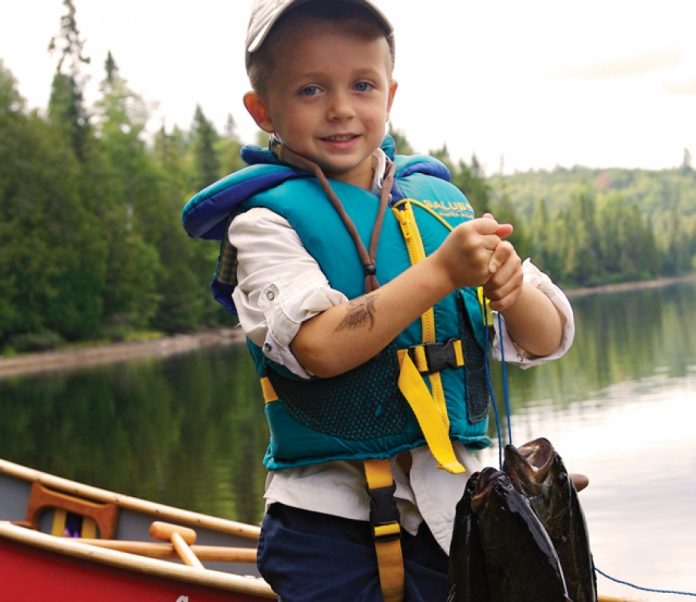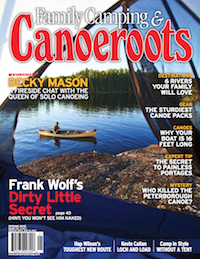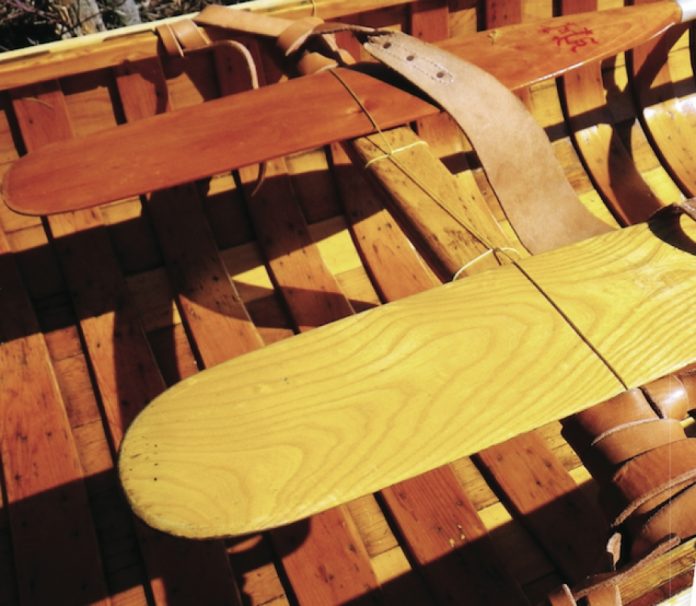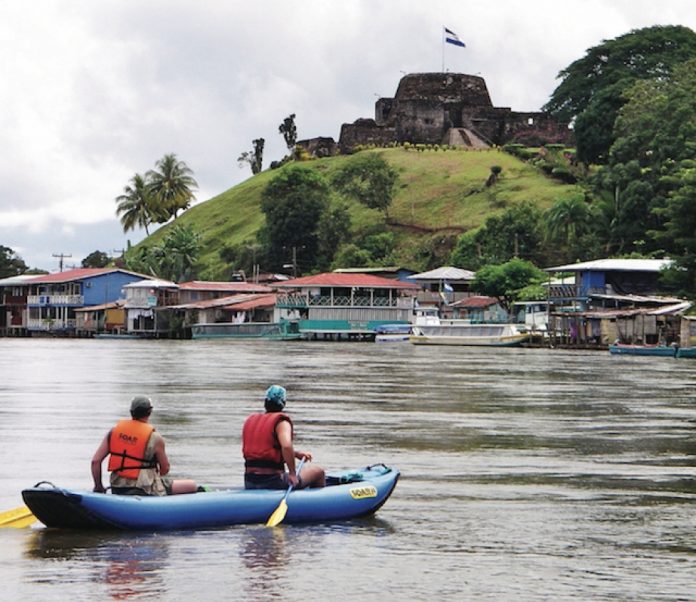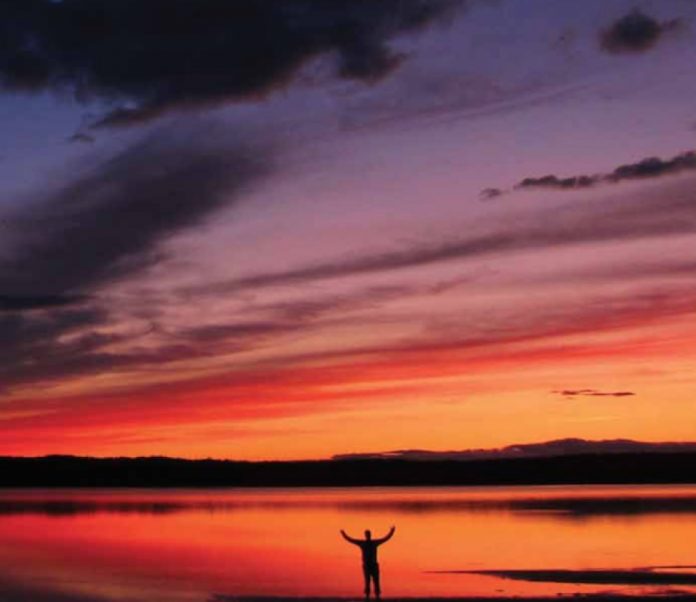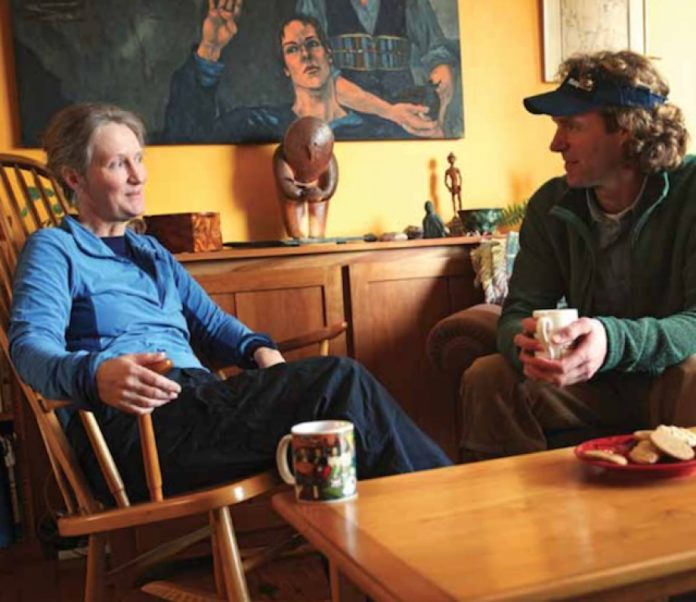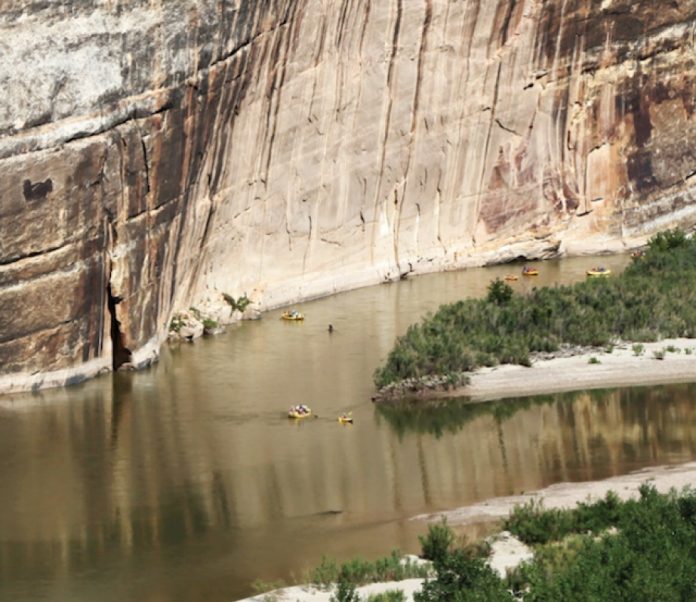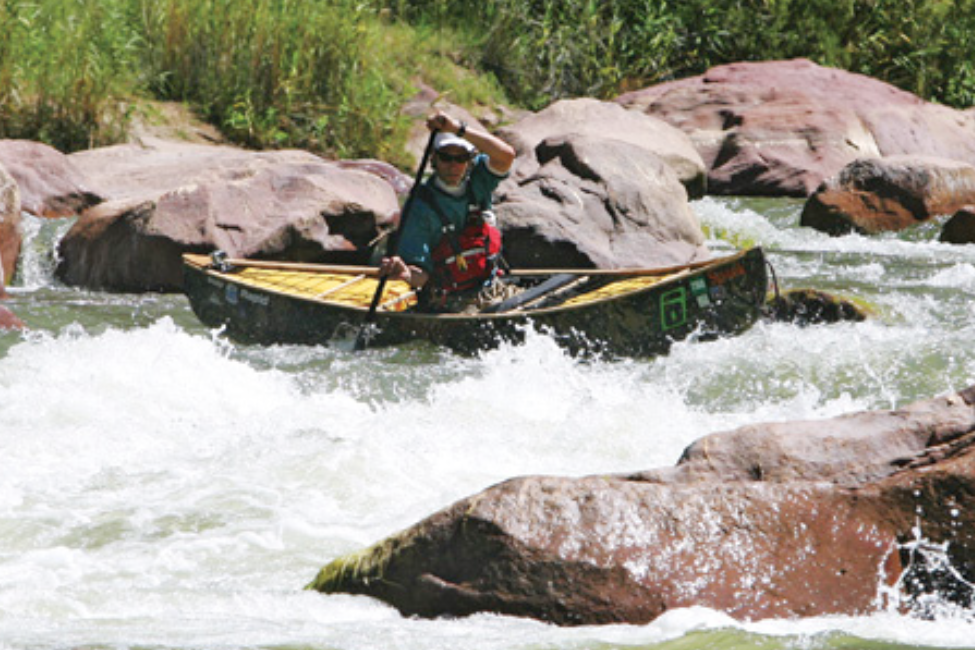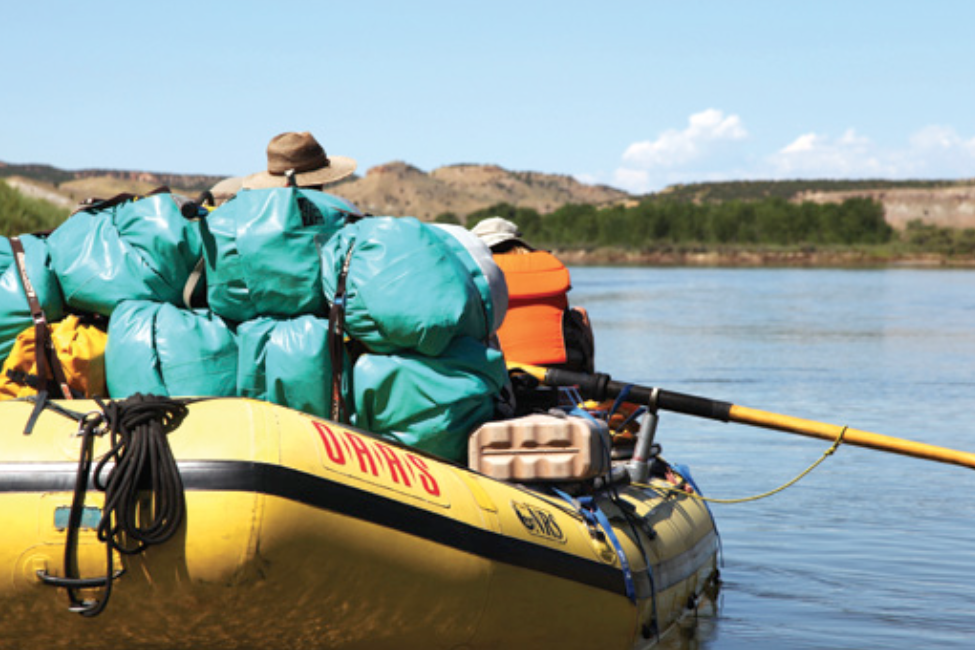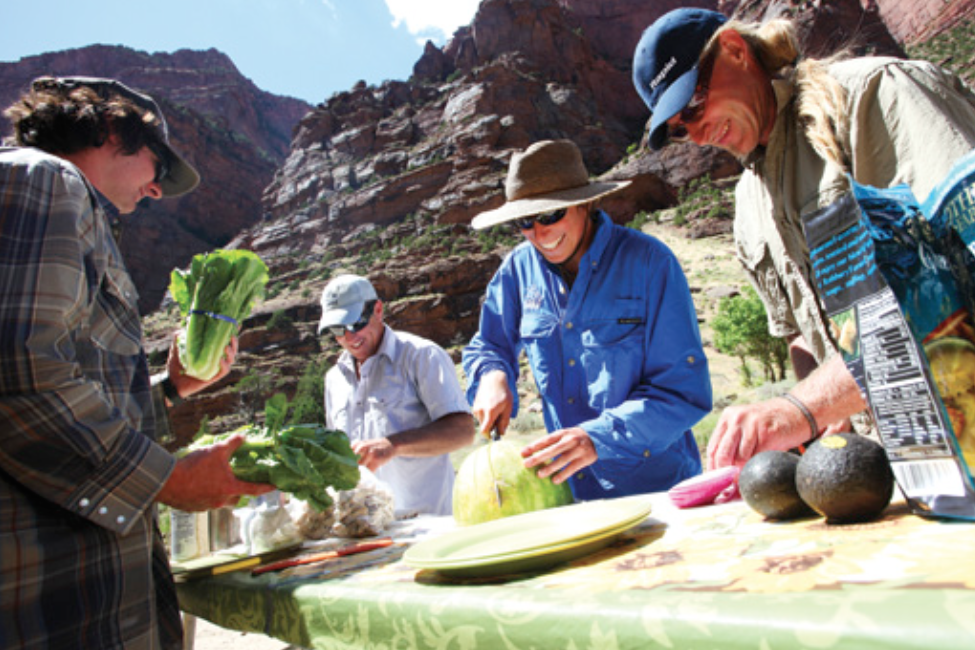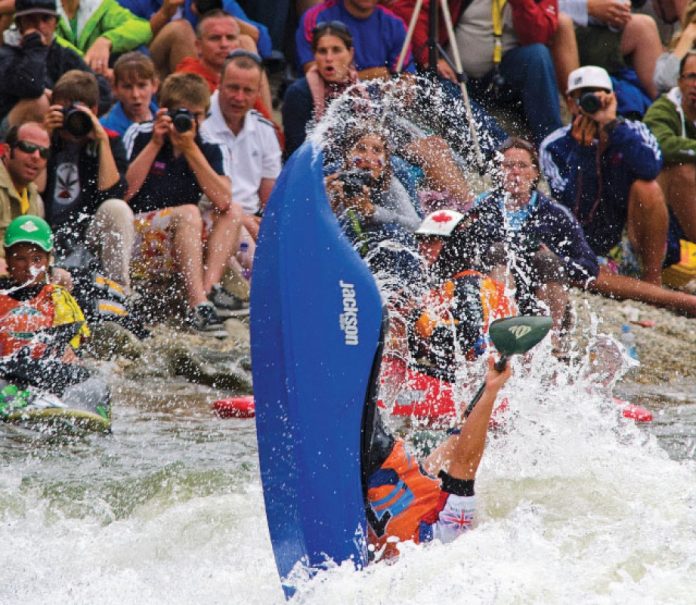Ken Whiting gave up everything to prepare for the 1997 World Rodeo Championships. He quit his job as a raft guide on the Ottawa River and stopped teaching whitewater kayaking courses on the weekends. For two years, he made ends meet by whittling wooden kayaks and canoes—the sort of kitsch that’s affixed to key chains and sold to tourists at outfitters’ shops. His life was freestyle kayaking, his workout regime consisting of “short, intense sessions combined with a lot of visits to the chiropractor.”
Whiting’s efforts paid off when he slipped his Perception 3-D into Horseshoe hole below McCoy’s Rapid on the Ottawa River and cartwheeled, spun, splitwheeled and blunted his way to a World Championship title.
“When I won I was in the best shape of my life and as confident as I’ve ever been,” says Whiting, who is now the founder and publisher of The Heliconia Press, a paddlesports and outdoors publisher in the Ottawa Valley.
American Jay Kincaid’s trajectory to the top paralleled Whiting’s. After finishing second in the 2002 Pre-World Championships, Kincaid committed himself to spending “an absurd” amount of time on the water, his sights set on winning the next Worlds.
“I paddled approximately 320 days in the year leading up to the World Championships, and on about half of those days I trained specifically for freestyle competition,” says Kincaid, who now lives in Reno, Nevada. “This meant going playboating with a specific plan, much like you would experience at a basketball practice.”
On his training days, Kincaid would write a workout on a piece of paper and carry it with him in his kayak in a Ziploc bag. Training was often a solitary pursuit in which he would “drill moves over and over again, work under the constraints of a stopwatch, work on fundamentals, practice the mental aspect of competition and use repetition to burn specific movements into muscle memory.”
By the time the 2003 Worlds rolled around in Graz, Austria, Kincaid was a machine. He remembers the feature for the competition as being “sticky and nasty,” one that sucked many competitors out of their boats and involved more swimming than any other biannual World Championship event to date. But Kincaid entered the munchy hole and deftly piloted his Dagger Kingpin through choreographed sequences of cartwheels, splitwheels, loops, blunts and tricky woos to victory. Like Whiting, he attributes the win to his obsessive training.
Fast forward to 2011 and the story is repeated, this time at the International Canoe Federation (ICF) World Championships in Plattling, Germany. British kayaker Claire O’Hara topped an increasingly competitive women’s K1 category, upsetting defending champion Emily Jackson and veteran freestyle competitor Ruth Gordon Ebens.
Her secret? Four years of dedicated training with a volunteer support crew that includes two coaches, three video analysis experts, physiotherapists, a masseuse, a sports psychologist, a personal trainer and a strength and conditioning trainer. “It used to be you just had to be a boater,” said O’Hara, 29, in an interview after her gold medal performance. “Now you have to be an athlete.”
But while O’Hara’s comments hint at a tide change in competitive freestyle kayaking, Whiting’s and Kincaid’s experiences suggest that the world’s best have always been more athlete than merely talented or dedicated boater. What’s different is that there are now more top-level athlete-boaters than ever before and the Europeans are applying their mastery of training for Olympic slalom to freestyle.
As a result, O’Hara, her Team Great Britain colleague and men’s K1 winner James Bebbington, Slovakian silver medalist Peter Csonka and a handful of others from across the pond are staking key real estate on ICF freestyle medal podiums.
The field of paddlers is growing deeper, tricks are becoming more refined and the gender gap between men’s and women’s categories is shrinking by the year. The question now is, can the rogue, free-form boaters from North America keep up with the precise, finely tuned Euros?
Like competitive snowboarders, world-class freestyle kayakers have an identity crisis. On one hand, they’re boaters: The progression of their craft is bereft of rules and training is more about playing on the river than anything else; they meet their friends on the river to goof off, invent new moves and challenge each other. But on the other hand, they’re athletes, supremely dedicated to the sport and achieving feats of strength, agility and mental focus that few people can attain.
The best example of the freestyle dichotomy may be four-time World Champ Eric Jackson, the competitive paddling iron man who has been participating in international freestyle events since 1993. With a background in slalom, EJ brought the disciplined and technical approach of an Olympian to freestyle. He was among the first to capitalize on freestyle’s discrete scoring system, creating elaborate spreadsheets to hash out routines and maximize his point-scoring potential in competitions.
“EJ was the first to push everyone into having a routine,” says Whiting. “He brought an intelligence aspect to what’s essentially a reactionary sport.”
Yet EJ is also willing to have fun, play and experiment—the antithesis of the serious athlete. It was these traits that enabled him to invent some of the bouncing, spinning and twisting moves that dominate today’s ICF freestyle events.
“My father has really taught me that freestyle kayaking is just about getting out on the water as often as possible,” says Emily Jackson. “[Training is] usually all of us fooling around. But we are fooling around a specific goal and we know what that goal is each time we enter the hole.”
The early freestyle events were small and decidedly one-sided affairs. Outside of the United States and Canada, freestyle tended to attract recreational paddlers turned off by the entrenched European tradition of competitive slalom. “Americans always took it seriously, but there was a European contingent that wanted it to be less competitive and more of a festival,” says EJ. “That was mostly because they weren’t very competitive then, so they wanted to downplay that part.”
Meanwhile, the sport progressed, largely due to advancements in kayak design and new tricks that were invented and perfected by freestyle pioneers like Corran Addison, Steve Fisher, Whiting and Kincaid. The Internet and an increasingly global paddling community exported the top playboating moves to all corners of the world, and the sport flourished.
The 2011 World Championships included 225 competitors representing almost 30 nations. The Europeans are catching up.
O’Hara’s rise to the top demonstrates the great strides freestyle kayaking has made, and the immediate threat posed by Europe’s powerhouses of competitive paddling. O’Hara got started in 2006, when she competed in the European Championships in Nottingham, England. She followed this up with a trip to the 2007 World Championships on the Ottawa River, where she finished 11th in K1.
On the Ottawa, O’Hara learned that “freestyle was quickly becoming professional, an athlete’s game,” she says. “The gap from the top of the pack to the bottom was impressive and the standard of the top paddlers was insane.”
So she started taking things more seriously, working as an instructor and sports coordinator at a British college to fund her other “job”—training to be the world’s best freestyle kayaker.
She paddles on the river and in the pool under the tutelage of British coach Dennis Newton as part of a highly structured, four-year development program, which also includes working out with specialists in the gym and meeting with nutritionists, psychologists and physiotherapists. In short, “everything I do has a focus, an outcome, a goal,” says O’Hara. “My progression has been unbelievable.”
As it happens, Britain is proving to be “a perfect breeding ground for kayaking,” says Bebbington, a 23-year-old video boater and product of the whitewater training facility in Nottingham. A paddlesports scene deeply rooted in slalom has expanded seamlessly to freestyle, with clubs and training centers of- fering up-and-coming athletes like O’Hara and Bebbington well-structured and technical support. Compare this to the free-form approach of the Americans and it’s easy to see why the Brits cleaned up in Plattling.
Two years into her training plan, O’Hara entered the 2011 World Championships as an underdog. On the wave, she surprised everyone by routinely nailing difficult sequences involving felixes, loops, space Godzillas, lunar orbits and mcnastys—high- scoring aerial tricks that were unheard of in women’s playboating only a few years ago— and had the mental fortitude to keep it up through multiple rounds of competition. At the end, she pumped her fists and climbed past Emily Jackson to the top of the podium.
Time will tell if O’Hara, Bebbington and Csonka can once again beat out America’s best at the 2013 World Championships on North Carolina’s Nantahala River. It’s hard to predict the outcome of home-turf advantage—the last time the Worlds were hosted on U.S. waters was 1993, when EJ was vying for his first World Championship title and the event was considered the birth of competitive freestyle as we know it today.
Becoming the world’s best freestyle kayaker still takes Whiting’s willingness to put the rest of your life on hold and Kincaid’s commit- ment to spending day after day on the river. Only now, with the talent pool swelling and a new cohort of youthful paddlers nipping on the veterans’ heels, it’s harder than ever.
It’s telling that the ride put up by 17-year- old Dane Jackson in the junior semi-finals at the 2011 Worlds would’ve been enough to win the men’s division. What’s more, Eric Jackson says he could list off 20 names capable of making the top-five final round of an international freestyle event.
“I think that what the top paddlers did five years ago with regards to training and preparation has not changed,” says Kincaid. “The system is the same, but more people are now training in a smarter and more specific way.”
Winning today means “knowing the moves really well, being super consistent, being able to go fast and huge, and linking things together on demand,” says EJ. Bebbington attributes his victory in Plattling to focusing on the mental side of competition and being able to perform when it matters.
In short, today’s freestyle paddlers are equal parts boaters and athletes who make the sport their full-time job, set goals and train hard to achieve them.
All this begs the question, where does freestyle go from here?
Seven years ago, at an anticlimactic Worlds in Penrith, Australia, the International Freestyle Committee planted the seed of an Olympic dream. They tweaked the scoring system, launched an off-year World Cup series and handed over white- water freestyle to the International Olympic Committee-recognized ICF. Wannabe Olympians looked forward to freestyle as a demonstration event as early as 2012.
And now, with solid competitors from all over the world and an increasingly tried and true scoring system, the Summer Games seems like a logical next step. While freestyle paddlers won’t share space at the new Lee Valley White Water Centre with slalom boaters this summer in London, the sport’s future appears secure in the hands of an impressive crop of junior paddlers. EJ thinks the move to the Olympics is inevitable.
For her part, O’Hara just wants more recognition and more financial support for what goes into grooming a champion. “I define myself as a freestyle kayaker,” she says. “I would like to see it become fully professional.”
Conor Mihell is an award-winning freelance writer. He reported on the state of feestyle in Rapid Summer/Fall 2009.

This article first appeared in the Spring 2012 issue of Rapid Magazine. For more great content, subscribe to Rapid’s print and digital editions here.




